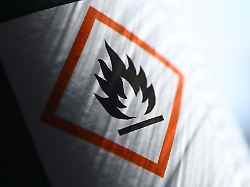Consumers are not saving enough
Gas shortage is far from averted
By Christina Lohner
10/07/2022 08:09 am
With the first cold nights, the appeals to save gas seem to have been forgotten. But without significant savings, Germany faces a shortage despite well-stocked storage facilities. The planned gas price brake could further exacerbate the problem.
Less than three weeks ago, Economics Minister Robert Habeck was optimistic: despite the lack of Russian gas, Germany has a chance of getting through the winter well – a few months earlier he would not have said so. Chancellor Olaf Scholz had also signaled the all-clear a week earlier. It is quite possible that both already regret their statements. Because the fact that a gas shortage can only be prevented, even with well-filled storage tanks, if consumers save significantly, does not seem to have caught on with many. Klaus Müller, head of the Federal Network Agency, is therefore sounding the alarm: Gas consumption has increased too much in the past week. “The situation can become very serious if we don’t significantly reduce our gas consumption.”
The increase compared to previous years is partly due to the fact that it was colder than it was then, as Casimir Lorenz, head of the Central Europe team at the energy consulting firm Aurora Energy Research, explains in an interview with ntv.de. “If you factor out the temperature effect, there is a certain saving.” The problem: “We still have to achieve the savings target.” Despite the high storage levels and the expansion of liquid gas imports, the situation is very critical. “We can continue to slip into a shortage,” emphasizes Lorenz.
Germany will hardly be able to avoid a gas emergency in winter without at least 20 percent savings in the private, commercial and industrial sectors, confirms Müller. According to figures from the Federal Network Agency, gas consumption by private households and smaller commercial customers last week was almost ten percent above the average consumption of the past four years. The consumption of industrial customers was only a good two percent below the level of previous years. Private households and smaller commercial customers are responsible for around 40 percent of gas consumption, while large industrial customers account for 60 percent.
However, it is not surprising that consumers are saving too little – not only because it has become significantly cooler outside. In addition, the price increase is not yet tangible for many. Many households have no idea how much higher their gas bill will actually be. With regard to the savings incentive, Lorenz is also critical of the gas price cap that the federal government is now planning. “I see the social dimension, but we shouldn’t signal that you don’t have to do everything in your power to save.” In Spain, which has already introduced a price cap, consumption has increased.
High prices are not only an incentive to save, according to Lorenz, they also make it easy to see which branches of industry are willing to produce and at what prices. In his opinion, in the event of a shortage, it would be easy to determine who would be the first to turn off the gas tap.
Even a few cold days can lead to deficiency
At least the weather shouldn’t exacerbate the situation – the coming winter is expected to be mild. “The experimental long-term forecasts of the American weather service NOAA are currently consistently too warm to significantly too warm for the next six months,” explains ntv meteorologist Björn Alexander. “However, winters that are too warm can of course also include cold to icy sections – as in February 2021.”
Such cold sections can in turn make a deficiency more likely. Because if storage levels are low, gas customers could go away empty-handed even on a few cold days. There are technical reasons for this, as Sebastian Bleschke, Managing Director of the Energy Storage Initiative (INES), an association of operators of German gas and hydrogen storage facilities, explained to ntv.de: the less gas in the storage facility, the lower the pressure and thus the slower the withdrawal. This means that at the end of winter in particular, when the storage tanks are already low, consumers may not have as much gas available as they actually want to call off.
If a shortage actually occurs, however, private consumers need not initially be afraid of sitting out in the cold. Because the heating of private households is protected by law. Which customer would instead turn off the gas tap first, would have to Federal Network Agency decide.
“Storage target of 95 percent is getting close”
The storage facilities are currently around 92 percent full, and by November 1 it should be 95 percent. “Around 0.2 to 0.3 percentage points are added every day, and the trend is falling,” explains Timm Kehler, Managing Director of the “Zukunft Gas” association, in an interview with ntv.de. “If you extrapolate that, it will be relatively close to reaching 95 percent. So we have to be cautious about gas demand, including in industry.”
Even if the 95 percent is reached, that does not mean that there is no shortage. After all, without Russian gas, import opportunities remain reduced in the winter. The sheer amount of storage is by no means sufficient for the winter, which would only last about two months.
If, despite the risk factors, there is no shortage of gas in the end, there is a risk of a shortage again next year. “Even if all the planned LNG terminals are completed, the question remains whether we can get the liquefied gas to Europe,” Lorenz clarifies. For example, demand from China could grow again. “The winter of 2023/24 will definitely be critical – and expensive.”
